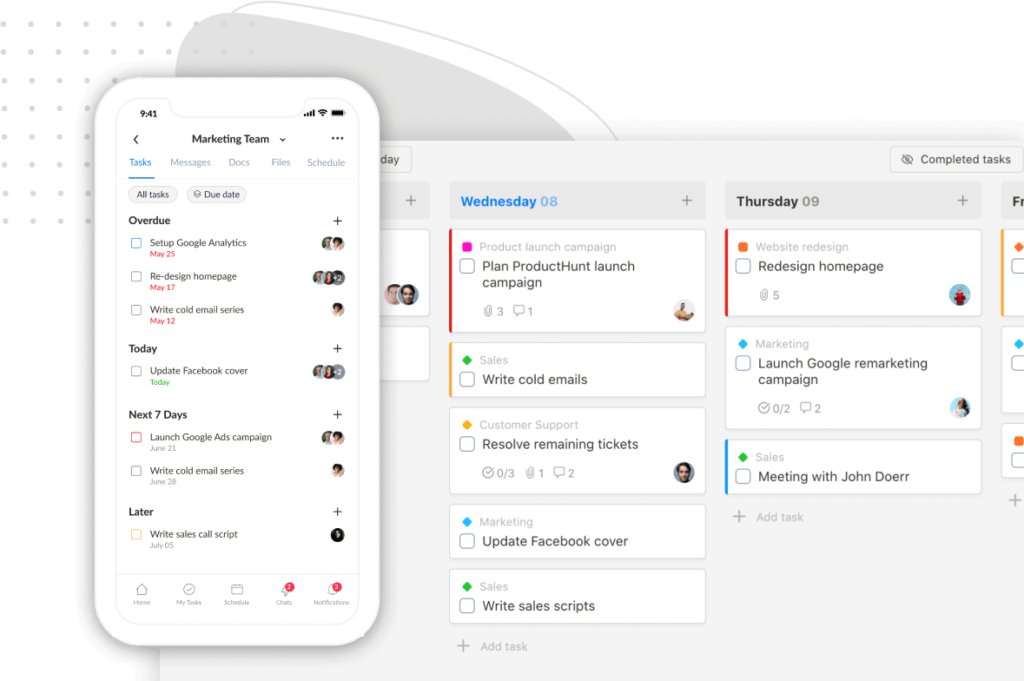Tired of wasting valuable time and energy trying to keep track of project deadlines and team schedules?
Look no further!
In this blog post, we’ll introduce you to the 14 best project scheduling tools that will supercharge your productivity.
Whether you’re a seasoned professional or just starting out, these tools are guaranteed to streamline your workflow, stay on top of tasks, and ensure seamless collaboration among your team members.
Let’s take the guesswork out of scheduling and embrace efficiency like never before!
14 Best Project Scheduling Tools (Free & Paid)
1. Wrike
Wrike is designed with a heavy focus on team collaboration context. So if you’re a solo-entrepreneur, you may find it is too clunky for your needs. But for project teams and businesses, Wrike is the best project scheduling software.
It gives you multiple pricing options, along with equivalent advanced feature sets.
For example, on the free version, you get two view options: Kanban Boards and Tables, making it easy to track project progress. One standout feature of this project management scheduling software is its AI content generation, which allows you to create detailed project plans in seconds.
From the second pricing tier (Team) up, Wrike provides robust project scheduling features, like Gantt charts and interactive timeline features. They provide a holistic view of project tasks and dependencies, enhancing project planning and tracking.
On higher tiers, the project management platform offers reporting tools, resource planning tools, time-tracking features, and project portfolio management. This allows business owners and project managers to easily keep track of their project data in one place, enhancing efficiency and productivity.
But take note that Wrike, like many all-in-one project management tools, has a steep learning curve. Plus, the user interface is cluttered and overwhelming.
Key features
- Calendars & project schedules
- Interactive Gantt charts – easy to see a project timeline
- Subtask, custom field, project status, etc.
- Various resource management features: resource allocation, workload charts, resources view, etc.
- Reporting features: dashboards, real-time reports, analytics, etc.
Limitations
- Limited file storage capacity
- Steep learning curve
- Cluttered interface
Pricing
This project management scheduling software solution offers five pricing options as below:

2. Upbase
Are you a beginner or part of a small team with budget constraints? Look no further than Upbase – the best project scheduling software designed to simplify your project management journey.
Why Choose Upbase?
+ Budget-Friendly: Upbase offers a free plan with unlimited users and tasks, while pricing is straightforward, starting at just $5-$8 per user.
(Plus, no hidden costs when working with clients.)
+ Intuitive Interface: With Upbase, you don’t need to be tech-savvy. Its intuitive and clutter-free interface ensures that you can dive right in without needing to consult lengthy manuals.
+ Customizable: Tailor Upbase to your unique needs, and enjoy the top-notch user experience.
Upbase is a powerful all-in-one solution.
It supports project management, workflow planning, real-time communication, collaboration, and productivity management.
Notably, it offers a unique approach that both individuals and teams can use with no awkwardness.
Key Features That Make Upbase Stand Out
A. Excellent user experience
Boost your efficiency with handy add-ons like:
- Keyboard shortcuts
- Slash commands
- Ability to drag and drop tasks onto the calendar.
B. Robust project and task scheduling capabilities
Upbase empowers you to set start and end dates/times, assign tasks to team members, add tags and priorities, and establish recurring tasks.
Furthermore, it allows you to create project schedules by day, week, and month.
As a huge plus, Upbase offers two-way integration with Google Calendar.
This means you can import events from Google Calendar into Upbase calendars, and vice versa.
Plus, you can connect with multiple Google calendars.
The best part, all events from the selected Google calendars will appear on the Upbase calendar with the same color as in Google Calendar.
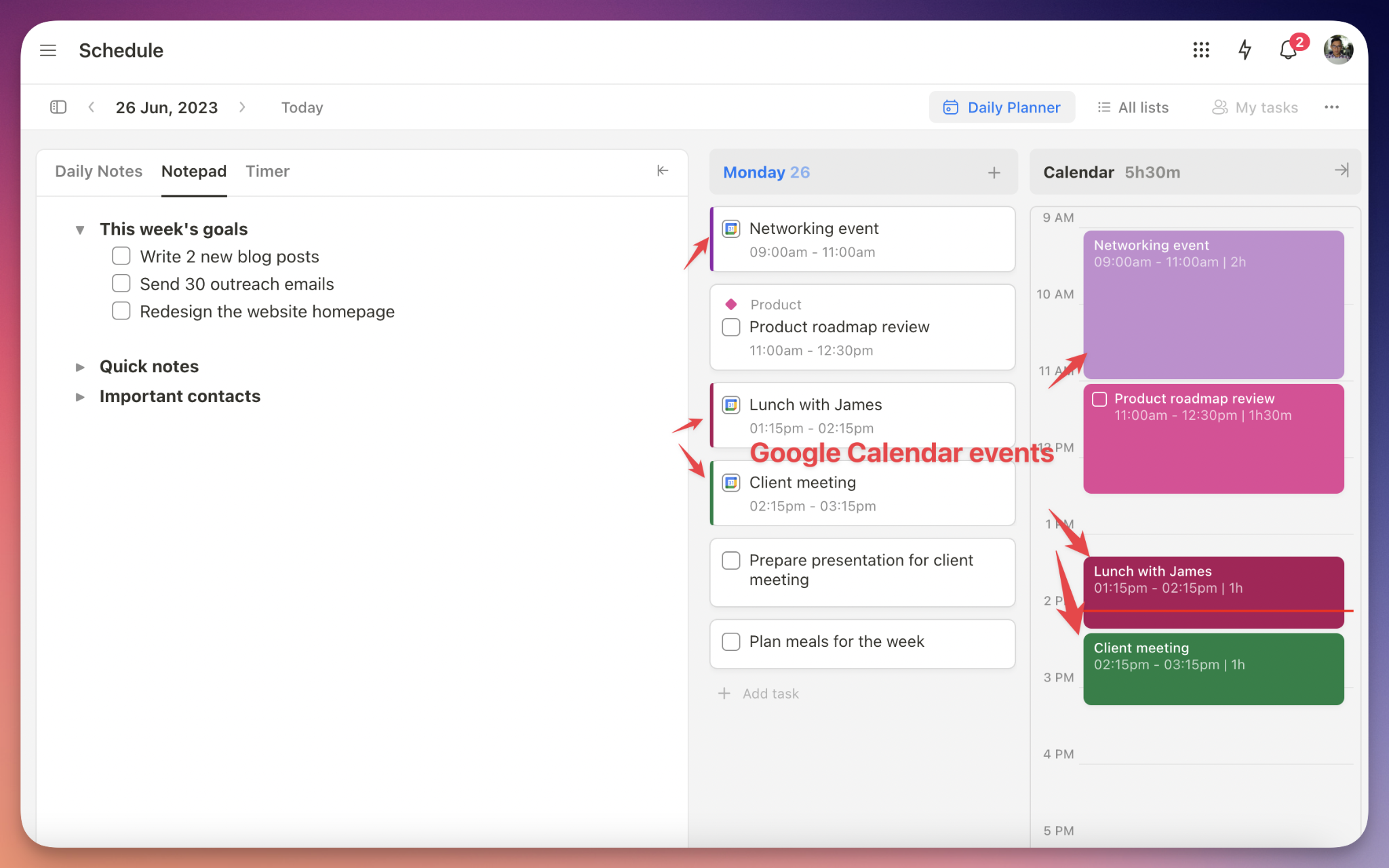
C. “Members” page
Keep your team’s workload in check with the Members page!
This is where you can access insights into assigned tasks, deadlines, priorities, and project involvements.
Say goodbye to burnout as project managers efficiently allocate work to their members.
D. Rich collaboration features and tools
Upbase excels in collaborative tools, including:
Shared calendars – where all team members get an overview of their project schedules.
Docs – which supports both native documents and embedded Google Docs/Sheets/Slides. Plus, you can organize documents into folders and subfolders.
Files – which supports both uploaded files and embedded Google Drive folders. (Notably, Upbase offers unlimited file storage capacity.)
Message boards – a perfect tool to keep teams promptly updated on all project changes without lengthy emails.
Chat – which supports 1:1, custom group, and project team chats.
Links – a dedicated place for organizing and sharing project-related links.

Additionally, there are many collaborative features like watchers, task assignees, attachments, @mention, and comments.
E. Customization
Tailor Upbase to match your unique project management needs with multiple calendar views, project views (Lists and Kanban boards), and customizable workflows.
No more clutter – hide unused collaborative tools for a streamlined experience.
For example, you can hide unused collaborative tools – such as chats and message boards – from your personal projects.

Available Everywhere You Go: Access Upbase seamlessly as a web and mobile app, ensuring that you can conveniently schedule and manage projects from anywhere.
Limitations
- No resource scheduling features
- No project timelines (yet)
Pricing
As mentioned, this project management scheduling software offers straightforward pricing with both a free plan and a premium plan.
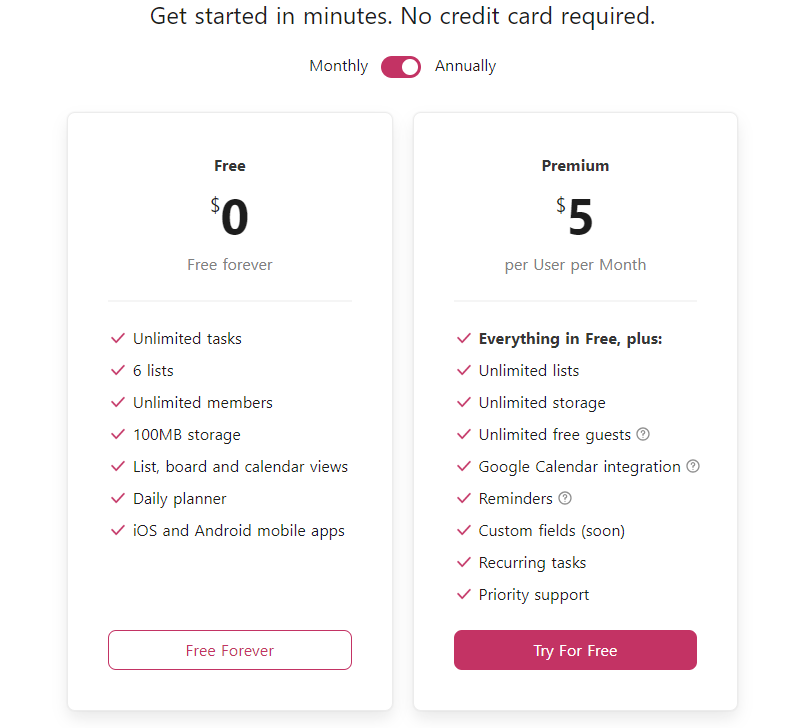
3. ProjectManager
As the name implies, this software is for project managers, especially those who oversee complex projects and need a holistic view to manage multiple projects at once.
Unlike some project scheduling tools on the market, ProjectManager offers a comprehensively deep feature package.
It allows you to set task dependencies, use Gantt charts to track progress, and adjust project schedules. Team members can easily communicate, share documents, and comment on tasks, fostering effective teamwork and problem-solving.
On higher pricing tiers, there are more advanced functionalities, such as resource management, reporting, and project portfolio management. This empowers you to allocate resources efficiently and get valuable insights into project performance to make informed decisions.
ProjectManager also integrates seamlessly with other project management tools, enhancing its versatility and fitting seamlessly into your existing workflows.
In short, this is the best project scheduling software for its Gantt chart capabilities, team collaboration tools, resource management, and reporting tools. Whether you’re managing a small team or a complex project, it’s an excellent choice to streamline your project planning and project management processes.
Key features
- Task lists
- Multiple views: Kanban boards, Gantt charts, lists, calendars, etc.
- Workloads, time-tracking, & resource management
- Reports & Dashboards
- Automation
Limitations
- No free version, but just a 30-day free trial
- Limited file storage capacity
- Steep learning curve
Pricing
The project management scheduling software offers three paid versions, each with a 30-day free trial.

4. Smartsheet
Smartsheet is one of very few project scheduling tools offering Gantt charts and automation features for free. In turn, it limits to one free user with up to two collaborators.
So if you’re a solo-entrepreneur or a micro-team familiarly working on a spreadsheet-style interface to track project progress, then Smartsheet is the best project scheduling software on the market.
A huge plus is:
Smartsheet combines the simplicity of spreadsheets with powerful project management features, making it easy for both beginners and experienced project managers to create and manage schedules.
Team collaboration is also a breeze. Smartsheet offers real-time updates, comments, and document sharing, so team members can work together efficiently within the platform.
Key features
- Calendar, Card, Grid, and Gantt chart views
- Dashboards, forms, & reports
- Automation
Limitations
- No built-in resource management tools
- Expensive for large teams and businesses
- Too limited file storage capacity
Pricing
The project scheduling software has four pricing options:

5. Runn
Runn is the best project scheduling software for small teams on a tight budget. Its free-forever plan offers all features, along with unlimited users and projects.
Project scheduling features in Runn are robust.
You can create project tasks, set milestones, define dependencies, and establish realistic deadlines. This level of detail is essential to plan projects and track progress with high accuracy.
But what truly sets this project management software apart is its resource planning capabilities.
Runn provides a clear visual representation of team capacity and resource availability, along with the ability to forecast future resource needs. This forward-looking approach helps in long-term project planning and ensures that teams are adequately staffed for upcoming projects.
Besides, its time-tracking capabilities enable teams to log their work hours accurately, contributing to precise project scheduling and resource allocation.
You can also use Runn to track budgets, which is a crucial aspect of effective project management.
Key features
- Unlimited users & projects
- Resource scheduling: schedules, charts, graphs, & resource availability
- Project phases, pipelines, & milestones
- Project budgeting
- Gantt charts
- Reports
Limitations
- Limited task management capabilities
- Lack of some reporting tools, compared to other similar project scheduling software
- High learning curve
Pricing

6. Mavenlink
Mavenlink stands as the best project scheduling tool because of its comprehensive approach.
You can use it for numerous purposes, such as task tracking, workflow planning, project scheduling, collaboration, resource management, time tracking, and financial oversight.
First and foremost, Mavenlink is a robust project management software.
It allows you to define tasks, set milestones, and establish task dependencies, providing a clear roadmap to easily manage your project schedule.
Moreover, it enables you to visualize tasks in a Gantt chart view, allocate resources, manage project budgets, and create even critical path analysis – which are integral to effective project scheduling.
In summary, Mavenlink is a great choice for professional services firms, where effective project management, resource allocation, and client billing are essential.
Key features
- Milestones & dependencies
- Gantt charts
- Task assignment & priorities
- File-sharing, notifications, & discussions
- Time-tracking & expense tracking
- Financial reports
Limitations
- Overwhelming for small teams with simple project management needs
- Difficult to learn, especially for low-tech people
- Lack of features for in-depth task tracking and project execution
Pricing
The project scheduling software offers five pricing plans, ranging from Free to Enterprise.
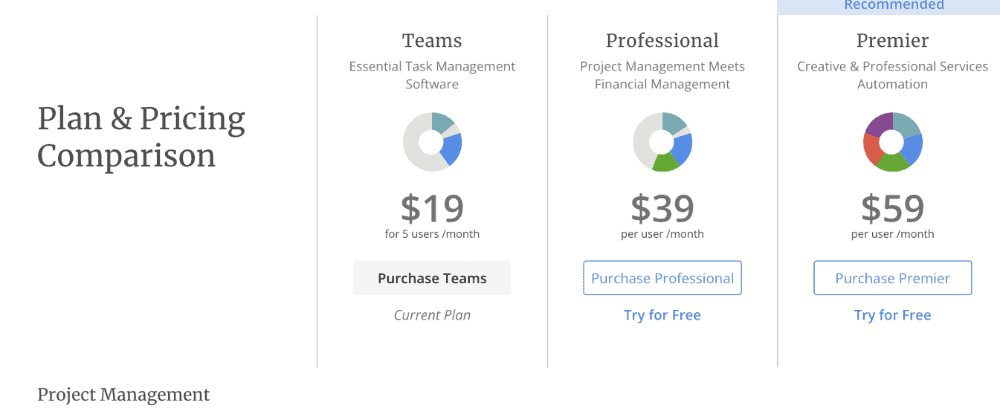
7. Ganttic
Ganttic is a cloud-based resource planning and project management software designed to help organizations effectively allocate and manage their resources, plan projects, and optimize workflows.
With it, you can create and manage project timelines, define tasks, set dependencies, and align them with resource schedules.
Then, you can define custom fields and attributes for resources and projects, ensuring the tool aligns perfectly with your industry requirements.
Ganttic offers the same features you’d expect in top project management software. Such as collaborative tools for team communication and scenario planning to model resource allocation changes.
With a Gantt chart view, you can visualize project timelines and dependencies easily.
All-in-all, Ganttic is the best project scheduling tool for those organizations that value efficiency and resource optimization in their project management processes.
Key features
- Charts, lists, Kanban boards, and Gantt charts
- Recurring tasks
- Time tracking
- Resource capacity planning
- Automated reporting
- Scenario Planning
Limitations
- Complex pricing
- Overwhelming for micro teams that need simple scheduling needs
Pricing
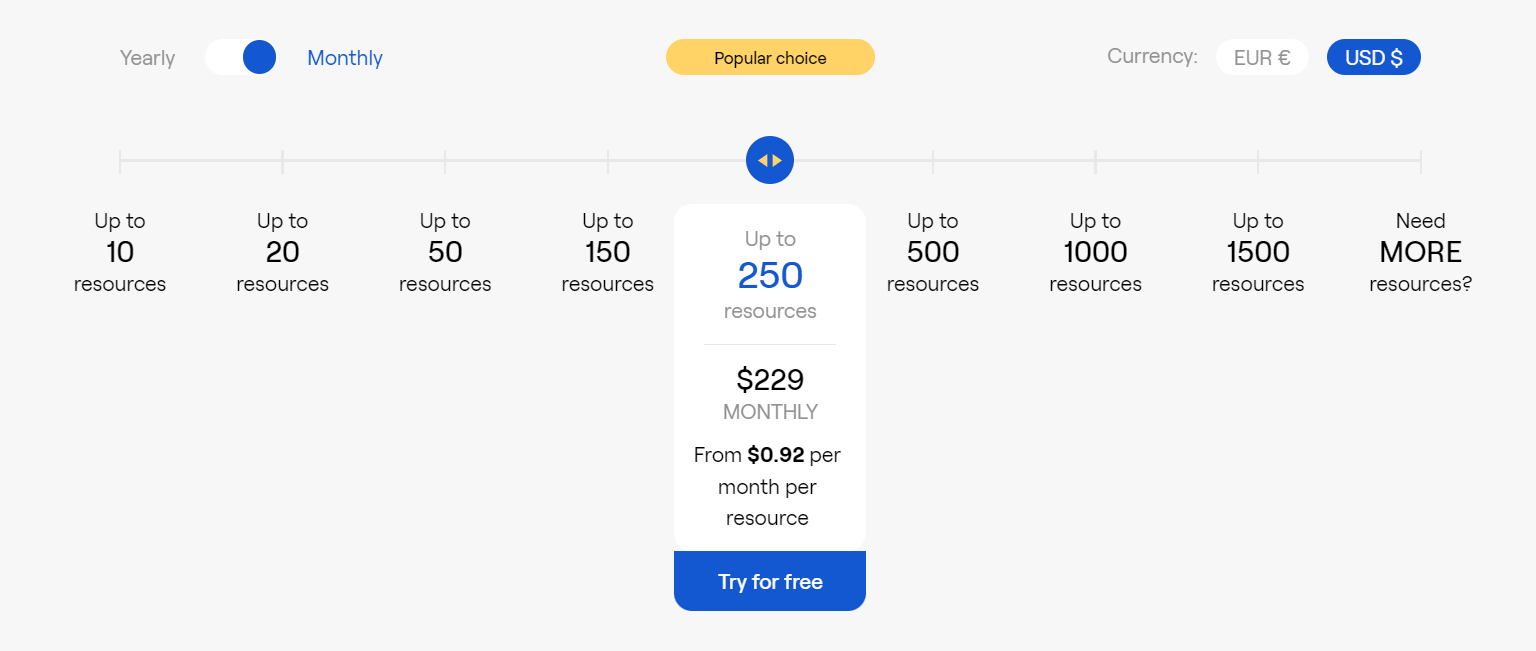
Note: Resources, in the company’s words, are anything or anyone needs for a project to succeed.
8. Monday
What makes Monday.com stand out from other project scheduling software tools is its highly visual nature.
It’s a breeze to create and manage project schedules with Monday.com.
You can set up timelines, assign tasks to team members, and visualize task dependencies using timeline views, akin to a Gantt chart.
Furthermore, you can automate repetitive tasks, reminders, and notifications, reducing manual work and ensuring that project timelines are adhered to consistently.
Not just so, the project management scheduling tool also boasts intuitive collaboration features. From activity feeds, inboxes, and discussions to @mention, notifications, comments, and file-sharing.
All of these make Monday.com the best project scheduling tool for cross-functional teams and SMBs seeking an easy-to-use, flexible solution to work together efficiently throughout the project lifecycle, enhancing productivity.
Key features
- Various views: Kanban boards, timelines, calendars, maps, and charts
- Customizable columns, labels, and automation options
- Rich collaboration tools: messages, inbox, activity feeds, etc.
- Colorful and intuitive interface
- Time tracking
Limitations
- Novices may find this project scheduling software confusing to learn
- Expensive pricing
- Too limited free file storage capacity
Pricing
The project scheduling software offers five pricing tiers:

9. Asana
Asana is a robust all-in-one solution that can be used for complex project scheduling, task management, and resource scheduling.
While other project scheduling software tools only offer task dependencies, Asana takes it to the next level. It allows you to establish dependencies for both tasks and projects, ensuring that everything flows smoothly from one item to the next.
One of Asana’s highlights is flexibility.
This project scheduling software offers various view options. Such as board, calendar, and list views on the free version; Timeline, portfolio, and goal views on the paid versions.
Its calendar view allows you to schedule tasks by day, week, and month – perfect for both short-term and long-term projects. But the Gantt chart view is actually the game-changer. It not only visualizes project timelines but also offers a critical path method to calculate the project duration. This visual representation is invaluable for effective scheduling.
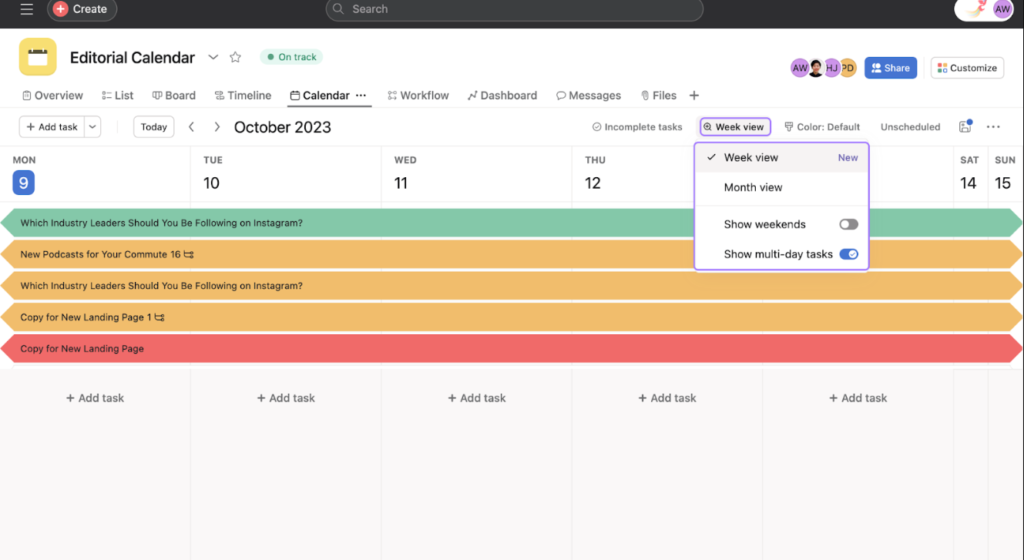
Read Full Review: Asana Review.
Asana’s reporting features are also notable. It updates project statuses on dashboards, allows you to create custom fields, visualize important milestones of projects, and offers a robust search feature.
Speaking of collaborative features, Asana offers a bunch. @Mentions, file attachments, comments, task assignments, collaborators, Inbox, etc.
But it’s worth noting that Asana only allows for assigning one team member to a task at a time, and it still lacks a real-time chat tool.
Key features
- Unlimited tasks, projects, activity logs, and file storage capacity
- Multiple views: List, board, Gantt chart, calendar, etc.
- Rich collaboration features: Inbox page, collaborators, assignees, etc.
- Critical path
- Reporting features
Limitations
- Unable to assign multiple team members to a task at a time
- Expensive pricing, compared to many project scheduling software tools
- Lack of a real-time chat tool
Pricing
The project scheduling software offers a free version and three paid versions: Premium, Business, and Enterprise.

(The Enterprise plan requires contacting Asana’s sales team for details.)
10. ClickUp
ClickUp is a highly versatile project scheduling software.
It offers a range of customizable views to plan, track, and schedule projects, making it adaptable to virtually any workflow.
Whether you prefer lists, boards, Gantt charts, calendars, or anything else, chances are that ClickUp has you covered as it offers 10+ different view options.
But ClickUp’s sheer depth of features is actually the most impressive. You can create a project schedule with ease, automate routine tasks, customize notifications, set reminders, and collaborate seamlessly with your team.
This project scheduling tool offers in-line comments, document sharing, and @mentions to keep your team connected and informed. You can brainstorm ideas in task comments, share project updates, and assign tasks without ever leaving the platform.
But nothing is perfect; so does ClickUp.
Keep in mind that such a feature-rich and highly customizable project scheduling app like ClickUp might be confusing for beginners to get a hang of.
Not to mention, its interface may become exceedingly clunky for single users.
Key features
- 10+ views: Gantt charts, Kanban boards, Everything view, etc.
- Real-time chat & collaborative docs
- Workflow automation features
- Custom fields, dashboards, and column calculations
Limitations
- Prone to feature overload, causing users to feel overwhelmed by options
- So many customization options create complex workflows and automation sequences
- Too limited free storage capacity
Pricing
The project scheduling software is free to start and offers three paid plans for those who want to enjoy more features.
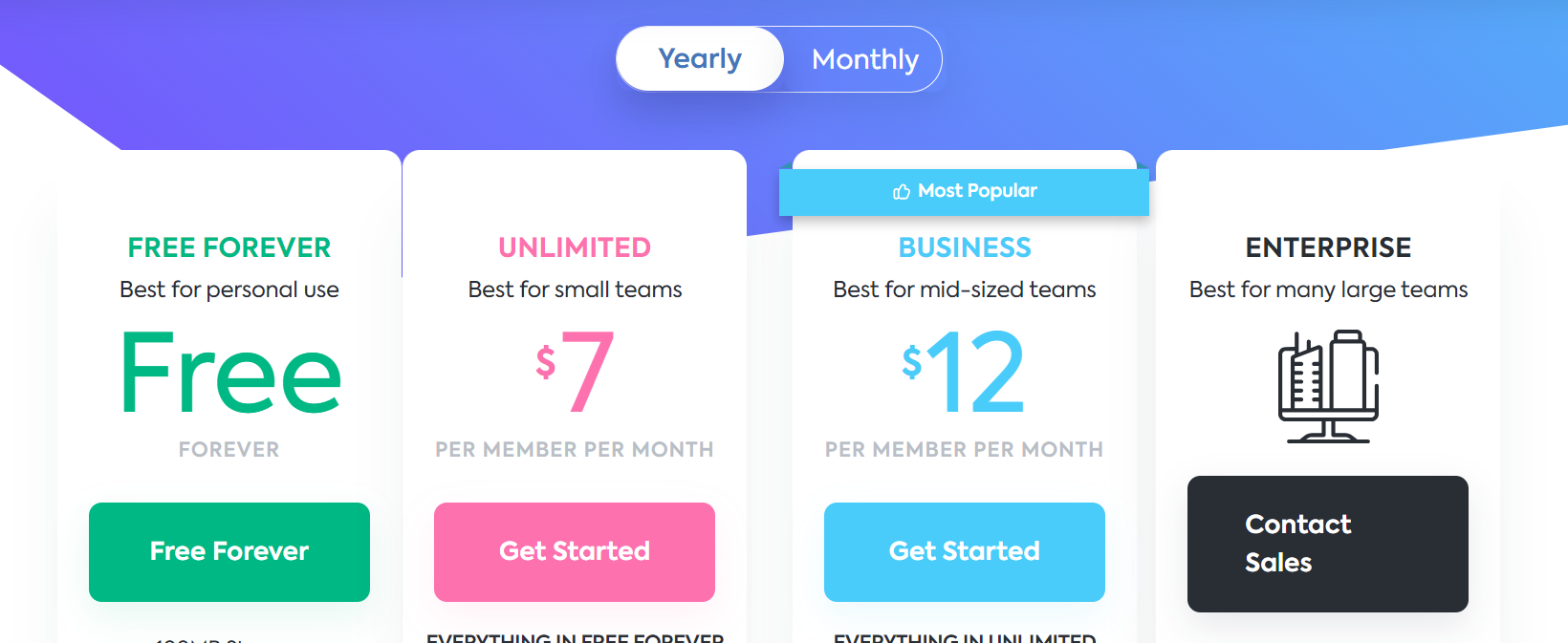
11. Paymo
Paymo is ideal for those seeking an all-in-one solution for complex project scheduling.
It offers a wide range of dedicated features and capabilities to facilitate effective planning, tracking, and management of complex projects. Such as Gantt chart view, task dependency, resource scheduling, and document management.
One of the standout features is how seamlessly Paymo integrates time estimation with task management. You can start a timer when you begin a task, and Paymo will log your hours automatically. This is invaluable for project scheduling because you can see how much time each task actually takes.
Not only that, the project scheduling platform is also packed with many features for client collaboration and invoicing, which simplifies project scheduling.
For example, you can create professional invoices based on tracked time and expenses. Then, set client permissions so that they can access project updates and invoices, reducing back-and-forth communication.
Key features
- Recurring tasks
- Guest access
- Task timers
- Unlimited invoices
- Static time reports
Limitations
- No file storage capacity on the free plan
- Too limited free tasks
- Paymo’s many premium features are offered for free in many project management scheduling tools (e.g. timers, unlimited tasks and clients, and Kanban boards)
Pricing
The project scheduling software offers flexible pricing to cater to different needs and budget ranges.

12. Hive
Hive is a powerful project scheduling tool designed with a user-friendly interface, allowing project managers to easily plan and keep track of work.
There are a lot of handy scheduling features in Hive, such as Gantt charts, dependencies, work hour entry, and resource allocation.
Additionally, the project scheduling software allows users to generate reports, monitor project progress, and gain insights into team performance.
Collaboration is seamless in Hive. The ability to leave comments, attach files, and use @mentions ensures that your team stays connected and informed throughout the project. Whether you’re discussing project details or assigning tasks, everything happens in real-time.
In summary, Hive is a great project scheduling software due to its flexibility, timeline views, task management capabilities, and collaboration features. With it, your team is kept working on the same page, helping to meet project deadlines and goals efficiently.
Key features
- Unlimited projects, tasks, & storage capacity
- Four free views: tables, boards, timelines, and calendars
- Time trackers
- Native chat tool
Limitations
- Very limited workspace members
- High price range
- Complexity for simple projects
Pricing

13. Nifty
This project scheduling tool combines seamlessly intuitive task management and collaboration features with robust resource management capabilities. That’s why, it’s a standout platform for managing projects of all sizes.
Let’s first explore Nifty’s task management.
What sets it apart is the dependency feature. You can link tasks together, ensuring that each step of your project follows a logical sequence.
For instance, when managing a software development project, you can set up dependencies so that coding only begins once the design phase is complete. This level of control is invaluable for project scheduling.
The timeline view in this project scheduling software is also a highlight. It provides project managers with a visual representation of timelines and dependencies. You can see the big picture and drill down into the finer details.
Key features
- Rich collaboration features: Files, Docs, Team Chat, Discussions, etc.
- Recurring tasks
- Task and milestone dependencies
- Budget tracking & reporting
Limitations
- No free-forever plan
- High learning curve
- Sky-high pricing
Pricing
Built for teams and businesses of all sizes, the project scheduling software offers flexible pricing as below:

14. Hub Planner
Hub Planner is a robust resource management and project scheduling software.
If you’re a project manager juggling multiple projects with limited resources, then Hub Planner is the solution. It allows you to allocate team members, rooms, and equipment to specific projects and tasks effortlessly. You get a real-time view of resource availability, ensuring that your projects are adequately staffed and resourced.
For project managers, Hub Planner offers many handy capabilities such as creating detailed plans, setting timelines, defining milestones, and tracking project-related costs – which helps maximize efficiency and productivity.
All-in-all, Hub Planner is the right project scheduling software for resource-intensive teams and organizations.
Key features
- Actual and schedule time
- Timesheets
- Dashboards & reports
- Resource schedulers
- Budget tracking
Limitations
- It takes time for beginners to get a hang of
- No free-forever plan
- Limited customization options
Pricing
This project scheduling software solution has no free plan, but three paid plans, each with a 14-day free trial.

Which is the best project scheduling software for you?
Choosing the right project scheduling software is crucial for your business’s success, and we’ve explored a range of options in this article.
But let’s cut to the chase:
If you want the simplest, most user-friendly, and feature-packed solution, why not give Upbase a shot?
Upbase stands out as the ideal choice for beginners and seasoned professionals alike.
It’s not just user-friendly; it’s user-loving.
Whether you’re a tech wizard or a newbie, you can dive right in without any barriers – and the best part? It’s free to get started!
What can Upbase offer you? Everything. From basic project organization to handling complex, long-term tasks, it has you covered.
Its flexibility knows no bounds. Upbase adapts to your unique project management needs, ensuring you’re always in control.
So, why wait?
Don’t let project scheduling challenges slow you down. Experience the simplicity, power, and limitless possibilities of Upbase for yourself.
Take the first step towards supercharging your project management capabilities – sign up now for a free Upbase account.
